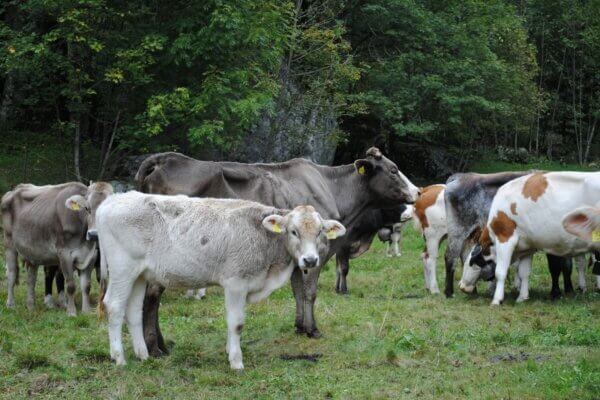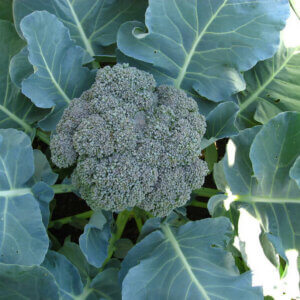Are you tired of traffic jams and the fast pace of city living? Do you long to escape the rush and retreat to the quiet of rural living? If so, you are not alone. Each year, more and more people chose to leave the cultural amenities and conveniences of urban life to embrace a simple, sustainable lifestyle.
Living the homestead lifestyle is not for everyone: Hard work and tight finances are exhausting both physically and emotionally. However, if self-reliance and debt-free living is your goal, modern-day homesteading can help you attain it. Read on to explore tips for rural self-sufficiency and how to enjoy the process.
1. What Are Your Priorities?
Honestly evaluate your motivation, available resources, physical fitness level, and farming skills. It is vital to establish a clear vision, clarify your values, and set goals to guide you as you plan your homestead adventure.
Perhaps you have been dreaming of serene rural living for years and you are now at a point in your life that you are ready to start planning a homestead of your own. First off, it is important to set your priorities.
There are a diverse array of facets to homesteading: cultivating and preserving your own food, raising livestock and poultry, producing your own energy, learning the skills required to build and maintain a home, as well as the knowledge to repair vehicles and machinery.
As an aspiring homesteader, it is important to consider your primary goals so you can focus your finances and energy appropriately.
2. Where Will Your Homestead Be Located?
Starting a small family homestead can be a daunting task. It’s hard to even figure out where to start. Take it slow and explore all of your options, especially if you are new to living off-grid and farming, you only have a few mechanical or carpentry skills, or you require an active social life.
Determine if you want the isolation of a remote, rural setting, or do you want to be within an hour’s drive from town? There are so many factors to consider. Do you plan to homeschool, or do you want to homestead in an area closer to public schools and a city center for the sake of your children’s education and social involvement?
When choosing a property, it is important to factor in concerns for your family’s health and safety. While the Internet provides flexibility in terms of accessing food and supplies in remote locations, there are some details you’ll need to consider:
- How far is the property from the nearest hospital?
- Are law enforcement and emergency services available to your location?
- Is the property you are considering within walking distance of neighbors?
- Are the rural roads to the area maintained in winter?
Think Small
First off, determine how many acres of land you will require to achieve your homesteading objectives. You may opt for a parcel of land as small as a couple of acres or as large as 100 acres or more.
If you plan to eventually raise livestock, you will need to factor in the size of the herd you are going to manage and find a parcel of land that will support your animals. If you are new to homesteading, starting out with 50 or more acres is likely more than you are equipped by knowledge or experience to handle. Start small with realistic expectations.
Ask The Experts
Do the research required to find the land that best suits your purpose. Talk to the local county extension office to determine the kinds of vegetation that flourish in your county.
Know in advance any particular problems homesteaders in your area are encountering such as invasive weeds, water rights or restrictions, land usage disputes, or any political issues brewing that could affect your peaceable and proposed use of the land.
When looking for property for a homestead, be sure to check local zoning ordinances that dictate property usage. Keep in mind that some rural land that’s close to the city may have rules and regulations that prevent you from raising poultry, livestock, operating a fresh produce stand, or opening a cottage craft shop on your property.
3. Can You Raise Animals For Food?
Many would-be homesteaders fail to really examine their feelings about animals. If your only interaction with animals is loving and caring for a family pet, how do you feel about raising animals for food?

It’s important to know if you can maintain an emotional distance from homestead livestock, feed them well, provide shelter, and always treat your animals humanely. Can you then turn around and send them off to market? If not, Porky the homestead pig will never become pork chops in the family freezer.
If you are new to small farming, it is crucial that you study and learn about animal husbandry and all the challenges and unpleasant tasks required so that you have a bit of knowledge and a “true picture” of what you are getting into.
Volunteer to help out at an animal shelter, help neighbors with their livestock chores, and attend livestock auctions. Your county extension office is an excellent resource to utilize to learn about the breeds of livestock and poultry that fare well locally.
4. What Will It Take To Care For Your Garden?
You don’t need to begin by planting acres of garden. Design garden space so that it has room to expand and start out small when making your first attempt at growing your own food. There’s a lot to learn, so do not expect ideal results the first season.
Keep in mind, it is easy to become discouraged when bugs invade your squash plants or an unexpected frost bites your tomatoes. Don’t give up. Look at it as an opportunity to learn the unique and particular challenges of homesteading in your local area. Most experienced gardeners report their most abundant crops are the product of many seasons of trial and error.
Get In Touch With The Soil
Look at land with new eyes, paying attention to the surface topography, drainage, and soil composition. Touch the earth and run your hands through the dirt. Look at areas to determine which receive the most sun and where the shady spots are located. Think about the amount of sunlight a particular spot receives in all seasons of the year.
Take random soil sample across your landscape. Place each sample in a plastic zip-lock bag and mark with a waterproof marker to identify the location. Take the samples to your local county extension for a broad-spectrum soil test to reveal soil pH, clay content and moisture retention. Armed with this knowledge, you can then supplement and amend the soil as needed.
Find Your USDA Plant Hardiness Zone
The United States is divided into 13 different plant hardiness zones. You have seen the brightly colored maps on the back of seed packages and in seed catalogs. Take time to understand where you fall in the set of zone guidelines to determine how well a particular plant will do and if it will even survive the winter cold in your particular locale.
Know Your Regional Climate
Without a good working knowledge of wind and weather patterns in your location, it is impossible to plan windbreaks, tree plantings, or garden plot placement.

Annual rainfall, the average date of the first frost, the temperatures highs of summer, and the duration and severity of winter will affect choices in structure construction, home insulating, water supplies, landscaping, and potentially profitable crop production.
What Will Affect Your Plants?
Wind, humidity, heat, moisture, and nutrient content of the soil are all critical components of successful plant cultivation. No matter your hardiness zone or gardening experience, if you do not have the right combination of these key ingredients, gardening efforts will tend to be less than satisfactory.
Consider native plants that are already hardened and adapted to local growing conditions. Talk to your local county extension office to help determine the types of trees, shrubs, and garden plants that fare best in your particular location.
5. How Frugal Are You?
Many would-be homesteaders think they have to have fancy, expensive equipment to cultivate and maintain a small family homestead when less expensive tools will do the job just as well.
When starting out, it is probably overspending to lease or purchase a full-sized garden tractor when you can rent a garden tiller for the weekend and get the job done. Don’t overextend on unnecessary purchases. Save as much as you can put away for times when unexpected expenses arise.
References
- New Farmers, United States Department of Agriculture
- Small Farm Funding, United States Department of Agriculture
- Exploring The Small Farm Dream, New England Small Farm Dream










































Thank you so much for this thoughtful article. I am considering living off grid in Montana in the next few years. I’m wondering if there is an online group or forum for homesteaders or off grid folks interested in selling their land/home to someone they can train or teach to run it properly, someone like myself that will take good care of it. Any tips on where to look or any contacts or links you can suggest would be wonderful! Thanks again, and good luck to you.
David–I’m not sure if you’re familiar with the Permies forum (https://permies.com/ ) –though I’m not a member, there’s lots of folks actively discussing homesteading there. You could probably also post an add on the local craigslist there in Montana, offering a homestead-sitting-learning sort of deal? The places I know that are most homestead-friendly (at least, when we were trying to find our land) were the Ozarks of Missouri and Arkansas, and Idaho (tons of homesteaders there!). Hope you find what you’re looking for, and have a fantastic adventure–deciding to homestead off-grid was the best decision my family has ever made. 🙂